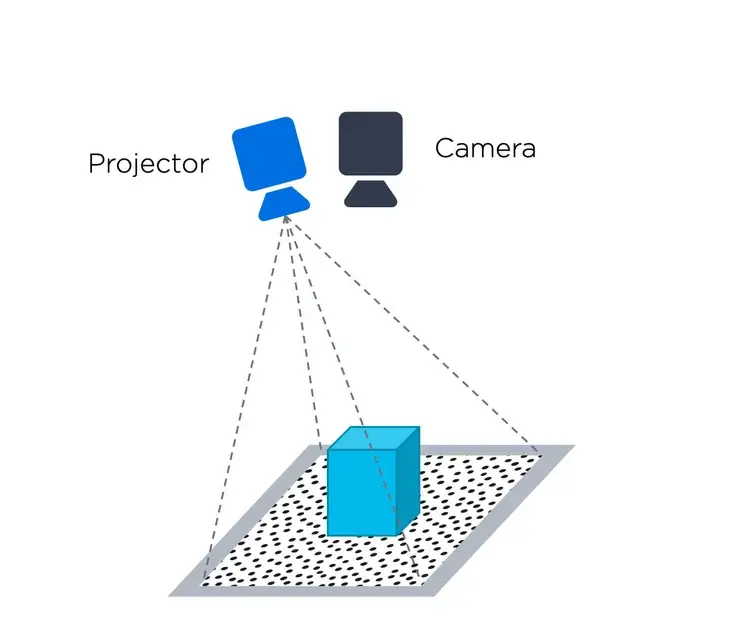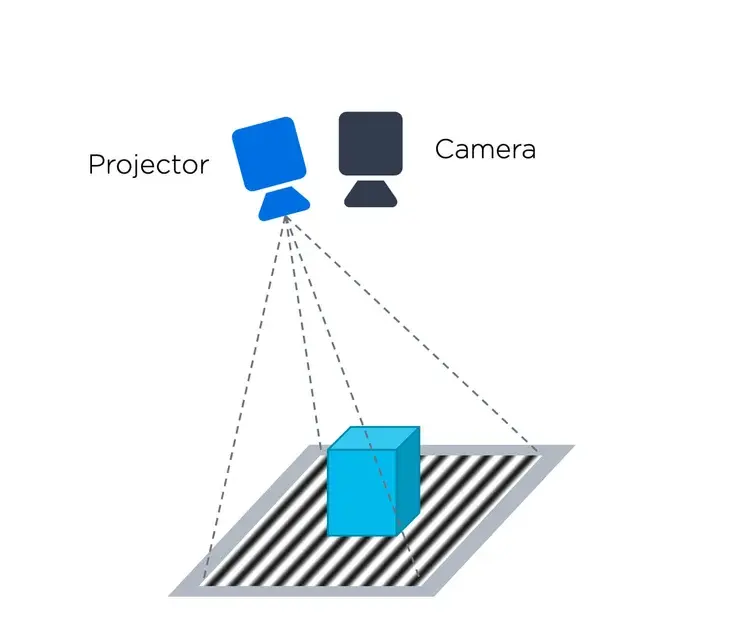How it works
Structured Light
![]()

Structured Light
Principles
- Projected pattern
- Distortion / displacements on objects in scene gives depth information.
Key considerations
- No texture on surfaces required.
- Single pattern - fast processing.
- Region based correspondence
- Block averaging.

Time-coded Structured Light
Principles
- Projected fringes
- Distortion / displacements on objects in scene gives depth information.
- Measure the time of emitted light and reflected response.
- Zivid utilizes a variant of this technique.
Key considerations
- Time-coded series of patterns, pixel-wise processing.
- No need for analyzing spatial neighborhood.
- Eliminates block averaging.
- No texture on surfaces required.
- Optimal combination of “space and time”.
- Utilize time as «baseline».
- Potentially most accurate 3D technology, underlying principle determines quality.
- Traditionally slow, Zivid has made it fast!
Watch Svenn Arne describe how time-coded structured light can create point clouds here:
Keep learning!
Read the whole article about active and passive 3D vision principles here, including stereo, active stereo, laser, ToF, and structured light machine vision.



